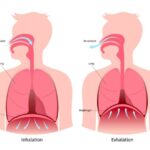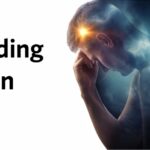Pain affects your entire being. This exceeds far beyond the location that ‘hurts’. When you experience chronic or sustained pain for an extended period of time, many systems change. These changes may actually sustain and reinforce your pain, thus creating a pain cycle.
Below is a compilation of information to help you understand pain, how/why it persists, and what you can do about it.
What is Pain?
Pain can be defined as “an unpleasant sensory and emotional experience associated with actual or potential tissue damage”. At times the pain can seem unpredictable. Because it is such an unpleasant experience it can be scary. In our experience and supported by pain science, the more we understand about the experience of pain, the less threatening and intense it becomes and the more quickly it resolves. As science progresses our understanding of pain, we are more and more amazed at how well our brain is working in a way that is trying to protect us.
Pain is:
- A good thing.
- An alarm system designed to alert you to danger and protect you from perceived or actual harm.
- An unpleasant sensation that is designed to motivate you to take action.
- A critical part of healing your body. In most cases when the body is healed and the threat is gone, the pain goes away.
- Normal and everyone experiences it with the exception of those with congenital analgesia, a life-threatening disorder where an individual cannot experience pain.
- Also used to express feelings of grief, loneliness, and alienation. In doing so, we acknowledge that pain is not simply a physical phenomenon.
Pain makes you move, think, and behave differently so that you protect your body from harm.
“When pain persists, and feels like it is ruining your life, it is difficult to see how it can be serving any useful purpose. But even when pain is chronic and nasty, it hurts because the brain has somehow concluded, for some reason or another, often subconsciously, that you are in danger – the trick is in finding out why the brain has come to this conclusion” (Butler & Moseley, 11).

The Basic Science of Pain:
We have sensors in our tissues that respond to particular types of sensory stimuli. There are sensors that respond to pressure, temperate, vibration, and chemical input. A specific type of sensor will respond to any stimuli (pressure, temperature, vibration) if the stimuli is great enough to indicate that damage to the tissue is occurring. These sensors are called nociceptors. Nociception literally means ‘danger reception’ but it doesn’t necessarily mean pain!
These nociceptors fire a lot during our day to day lives and we are not always aware of them because the signal is not strong enough to get past the spinal cord. However, if the signal is strong enough to indicate that there is damage occurring, it is allowed to travel up the spinal cord to the brain for processing.
The brain analyzes and interprets the information before creating a response. It assesses the importance of the information by comparing it to what is occurring at that moment in other systems (stress system, immune system, etc.), and weighing it against past experiences to determine just how threatening the signal is to the body. After synthesizing all available information, if the brain determines that you are in danger, the generated output will be pain and you will ‘hurt’.
Central Sensitization:
The pain pathway is a great alarm system. Its purpose is to protect you. However, it can malfunction and become hyper-sensitive. And pain affects your entire being.
When the brain becomes hyper-sensitized to pain, it is termed central sensitization. In simple terms, in a state of central sensitization, the brain becomes very efficient at associating stimuli (physical or emotional) with danger and is therefore very efficient at creating a pain response.
The expression “practice makes perfect” applies to pain. This is due to the pain pathway in that becoming more efficient at receiving and transmitting nociception, like a dirt road being transformed into a 4-lane highway.
In short term, this leads to increased sensitivity of the sensors. Two common phenomenon develop:
- Hyperalgesia: things that used to hurt now hurt more
- Allodynia: the pain spreads to include more surface areas that previously were not involved.
This can be a good thing! These changes cause you to think more about how you operate to prevent further injury. If these changes persist beyond the length of time required for tissue healing, they can lead to other long-term changes, which creates a vicious pain cycle.
What to Think About Pain
- Pain should diminish as tissues heal.
- Most tissues heal within 2-8 weeks, depending on the injury.
- When pain that lasts longer than the time it takes for the tissues to heal, central sensitization is often a component that needs to be addressed.
Do You Suffer from Central Sensitization
Common symptoms of central sensitization include:
- The pain that spreads (the area of pain becomes larger and less delineated).
- Pain is aggravated by an ever-increasing number of things. These may include touch, movement, smell, simply thinking about the painful area, or even seeing a picture of the area can result in increased pain symptoms.
- The pain can be unpredictable and flare-up without a reason
- Previous, current, or even anticipated traumas (i.e. car accident, falls, physical abuse) can increase symptoms when you have developed central sensitization.
Central Sensitization is associated with many types of disorders. These include but are not limited to:
- Rheumatoid Arthritis
- Osteoarthritis
- Fibromyalgia
- TMJ disorders
- Musculoskeletal pain: Whiplash syndrome, Shoulder impingement syndrome
- Headache
- Neuropathic pain
- Carpal Tunnel Syndrome
- Complex Regional Pain Syndrome (CRPS)
- Post-surgical Pain
- Visceral pain (pain produced by the thoracic or abdominal organs)
Things that reinforce central sensitization and perpetuate pain:
- Stress (internal or external)
- Sleep deprivation
- Dietary allergies or sensitivities
- Environmental allergies
- Emotional trauma
- Lack of balance or depleted levels of vitamins and minerals
- Hormonal imbalance
- Mental perseveration and focus on the pain
- Belief in the permanence of the pain
- Avoiding all movements and staying static
So What Now?
The information above describes the neurophysiology of pain, and is an overview of the contribution of the nervous system (brain) to the experience of pain, the role of central sensitization to the persistence pain, and the role of stress in perpetuating central sensitization.
Here are some basic strategies to help break the pain cycle:
- Learn about the problem. Reading this is a good start. Recommended reading is provided at the end of the article.
- Explore ways to improve.
- Stay positive.
- Be as active as you can be without increasing pain – “motion is lotion”.
- Seek guidance from a skilled manual therapist who has knowledge and experience managing chronic pain.

We are all affected by both internal (thoughts, poor sleep, fear) and external (accidents, postures, sports) stressors. The brain reacts the same, whether the source of our stress is internal or external and whether the damage is real or imagined. The focus of Functional Manual Therapy® is to help identify both the internal and external stressors, and to specifically address the external stressors. Let’s break down the external stressors into 3 categories:
- Mechanical dysfunctions: dysfunction of skin, muscles, joints, nerves and other tissues
- Neuromuscular dysfunctions: poor strength and endurance of muscles, and the inability to utilize proper muscles correctly
- Motor control dysfunctions: poor use of your muscles and poor body mechanics
Through identifying and treating these dysfunctions you can achieve and maintain a state of harmony and internal balance. You can heal!
Some of the worst things you can do include: doing nothing, avoiding all activity, waiting passively for something to happen, believing someone else has the answer.
What to Remember about Pain
- The brain produces all pain.
- Chronic pain that we feel is not equal to the amount of tissue damage or injury occurring.
- What happens in the body’s tissues is just one part of the pain experience.
- Pain affects your entire being.
The information above has been synthesized from the following books. For more information regarding the science of pain and many practical methods of breaking the pain cycle, I highly recommend these as resources.
Explain Pain – David Butler and Lorimer Mosely
Taming Pain and Taming Stress – Cheryl Wardlaw
The Institute of Physical Art – Functional Manual Therapy™






